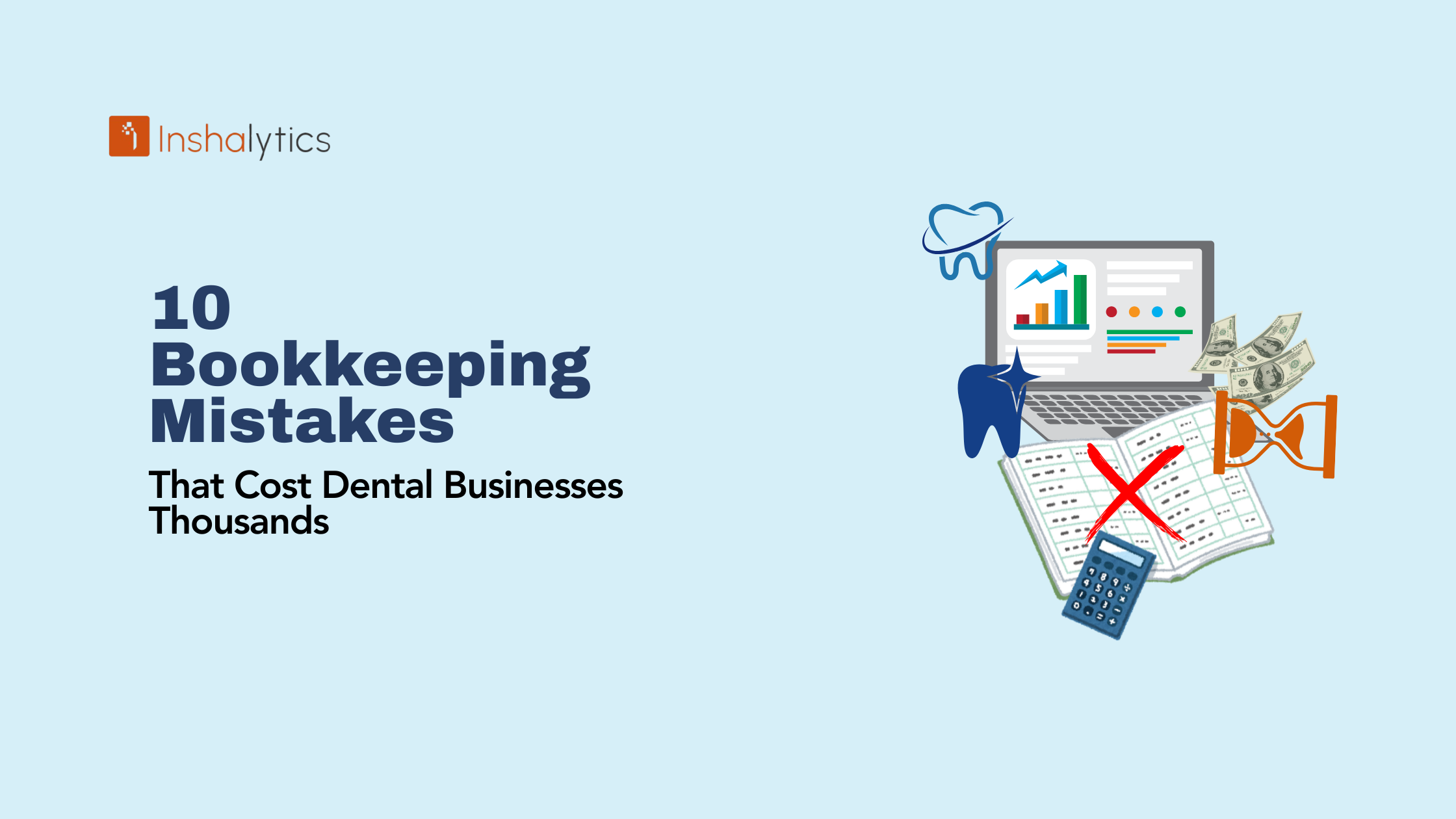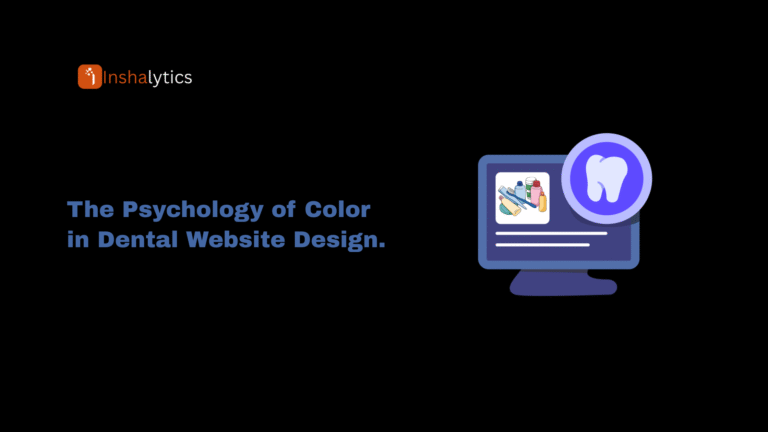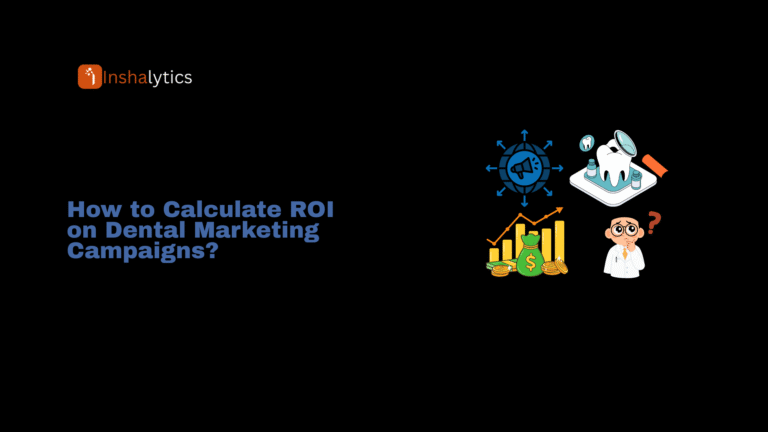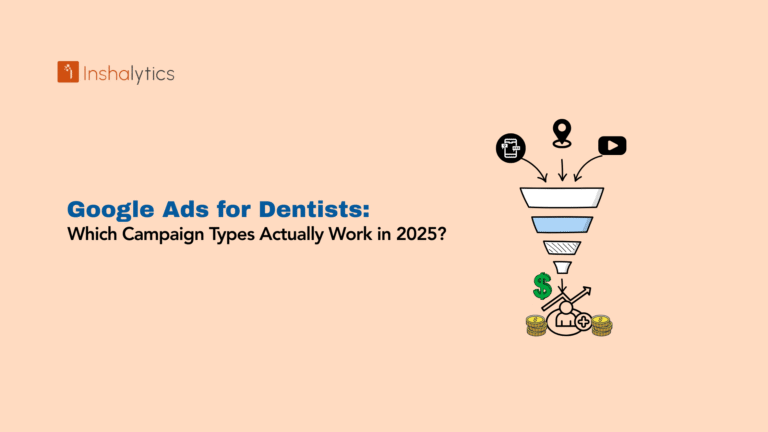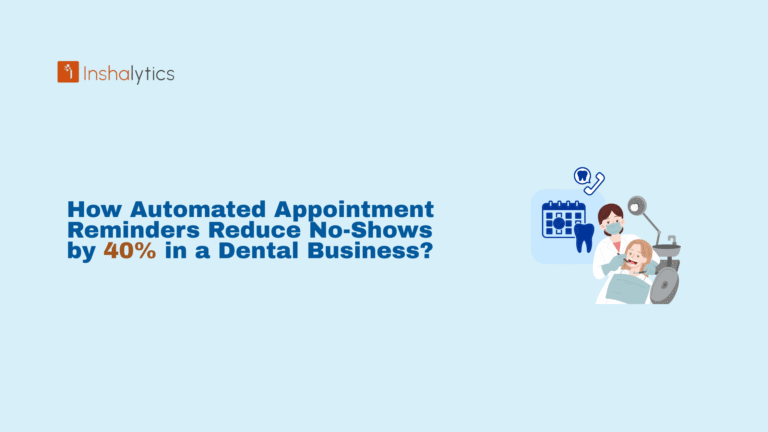Dental practice bookkeeping mistakes aren’t just administrative oversights they’re profit destroyers that can cost your practice tens of thousands annually while jeopardizing patient trust and regulatory compliance. After analyzing hundreds of dental practice financial records, we’ve identified the most expensive bookkeeping errors specific to dental businesses and the proven solutions that protect your revenue.
Most dental practices lose $15,000-$75,000 annually due to preventable bookkeeping and billing mistakes. Unlike general businesses, dental practices face unique challenges with insurance billing, production vs. collection tracking, and specialized compliance requirements that multiply the cost of errors.
Why Bookkeeping Mistakes Are Especially Costly for Dental Practices?
Dental practices operate in a complex financial environment where insurance companies account for 50-70% of revenue, treatment planning affects cash flow months in advance, and regulatory compliance mistakes can trigger costly audits. Poor bookkeeping doesn’t just create tax problems—it actively drains thousands from your practice through denied insurance claims, missed production opportunities, and compliance penalties.
The Hidden Financial Impact of Poor Dental Bookkeeping
Beyond obvious costs like claim denials, dental bookkeeping mistakes create cascading financial problems unique to healthcare practices. When your books fail to accurately track production versus collection, you can’t identify your most profitable procedures, optimize treatment mix, or make informed decisions about equipment investments and staff expansion. This lack of financial clarity typically costs dental practices 20-30% of their potential profitability.
Real Dental Practice Consequences: Beyond Just Lost Revenue
Inaccurate dental books affect every aspect of practice operations. Insurance companies scrutinize billing patterns for fraud indicators, banks require clean financials for equipment loans, and practice transitions depend heavily on accurate production records. Poor bookkeeping can trigger insurance audits, limit practice growth financing, and reduce practice valuation by hundreds of thousands during sales.
The 10 Most Expensive Dental Bookkeeping Mistakes
1. Confusing Cash Flow with Profit in Treatment Planning
The most costly mistake dental practices make is confusing profit with available cash flow when making major financial decisions. This fundamental misunderstanding leads to equipment purchases, expansion decisions, and staffing changes that create dangerous cash flow problems despite showing healthy profits on paper.
Why This Mistake Costs Dental Practices Thousands?
Dental practices have unique cash flow challenges due to insurance payment delays, treatment plan financing, and seasonal patient patterns. When dentists request financial figures for major purchases, inexperienced bookkeepers often provide profit figures without considering:
- Outstanding accounts receivable (often $50,000-$200,000 for busy practices)
- Upcoming equipment payments and loan obligations
- Seasonal cash flow variations (summer slowdowns, holiday schedules)
- Insurance payment delays (30-90 days for many carriers)
This leads to overdraft fees, missed payment penalties, and financial stress that can cost $5,000-$15,000 annually.
Quick Fix: Separate Cash Flow from Profit Reporting
Immediate actions:
- Generate separate profit & loss and cash flow statements monthly
- Track accounts receivable aging reports to understand collection timing
- Maintain 3-6 months of operating expenses in cash reserves
- Create rolling 13-week cash flow projections for major decisions
Long-term solution: Implement dental-specific accounting software that automatically separates production, collection, and cash flow metrics with real-time dashboards.
2. Not Using Industry-Standard Chart of Accounts for Dental Practices
Generic chart of accounts structures fail to capture the unique financial aspects of dental practices, making it impossible to track key performance indicators like production per hour, overhead percentages by category, or profitability by procedure type. This oversight typically costs practices $3,000-$12,000 annually in missed optimization opportunities.
How Generic Accounting Hides Dental Practice Insights?
Standard business charts of accounts don’t include essential dental categories:
- Production tracking by provider and procedure type
- Lab fees are separated from supply costs
- Insurance write-offs by the carrier
- Continuing education and license renewal costs
- Dental-specific equipment depreciation schedules
Without these categories, you can’t identify which procedures generate the highest margins, which insurance plans are most profitable, or where cost-cutting opportunities exist.
Setting Up Your Dental-Specific Chart of Accounts
Essential dental revenue categories:
- Fee-for-Service Production by Provider
- Insurance Production by Carrier Type
- Cosmetic vs. Restorative vs. Preventive Revenue
- Payment Plan and Financing Revenue
Specialized expense categories:
- Clinical Supplies (subdivided by procedure type)
- Lab Fees and Outside Services
- Insurance Claim Processing Costs
- Professional Development and CE Requirements
- Dental Equipment Maintenance and Depreciation
Best practices:
- Use dental practice management software that integrates with accounting systems
- Track production and collection separately for accurate performance analysis
- Maintain separate accounts for different insurance contract types
- Review and adjust categories quarterly based on practice changes
3. Inadequate Insurance Billing and Claims Management
Poor insurance billing practices represent the largest source of preventable revenue loss for dental practices. Billing errors, inadequate documentation, and failure to follow up on claims cost the average practice $20,000-$60,000 annually through denied claims, delayed payments, and compliance issues.
Insurance Billing Mistakes That Cost Dental Practices Most
Common costly errors:
- Inaccurate patient information: Wrong birthdates, names, or policy numbers (leads to automatic denials)
- Incorrect CDT coding: Using outdated or inappropriate procedure codes
- Missing pre-authorizations: Failing to obtain required approvals for major treatments
- Insufficient documentation: Not including required radiographs or narratives
- Bundling violations: Billing separately for procedures that should be combined
Each denied claim costs $25-$75 in administrative time to research, correct, and resubmit, while delayed payments create cash flow problems.
Step-by-Step Insurance Claims Optimization
Pre-treatment verification process:
- Verify patient eligibility and benefits before every appointment
- Check remaining annual maximums and deductible status
- Obtain pre-authorizations for procedures over $300
- Document benefit limitations and patient communication
- Calculate accurate patient portions and collect estimates upfront
Claims submission best practices:
- Update CDT codes annually and train staff on changes
- Use electronic claims submission for faster processing
- Include all required attachments and documentation
- Submit claims within 30 days of service (many contracts require this)
- Track claim status and follow up on unpaid claims within 30 days
Technology solutions:
- Practice management software with built-in claims tracking
- Electronic benefit verification systems
- Automated claim status checking
- Clearinghouse services for claim scrubbing and correction
4. Failing to Track Production vs Collection Separately
Many dental practices only track collections (money received) without properly measuring production (services performed), making it impossible to identify collection problems, insurance processing delays, or treatment acceptance issues. This oversight obscures $10,000-$40,000 in potential revenue annually.
Why Production vs Collection Tracking Is Critical?
Production metrics show:
- Provider productivity and efficiency
- Treatment acceptance rates by procedure
- Seasonal treatment patterns
- Capacity utilization and scheduling optimization opportunities
Collection metrics reveal:
- Insurance payment delays and denials
- Patient payment plan effectiveness
- Write-off patterns by insurance carrier
- Cash flow timing for financial planning
Without tracking both separately, you can’t identify whether revenue problems stem from low production, poor collection, or insurance processing issues.
Implementing Proper Production and Collection Tracking
Daily tracking requirements:
- Record all services performed at full fee schedule prices (production)
- Track all payments received by source (collection)
- Monitor treatment plans presented but not accepted
- Document insurance estimates vs actual payments
Monthly analysis reports:
- Production by provider and procedure type
- Collection ratios by payment source
- Accounts receivable aging by insurance carrier
- Treatment acceptance rates and conversion opportunities
Key performance indicators:
- Overall collection ratio (should be 95-98% within 90 days)
- Production per hour by provider
- Average case size and treatment plan acceptance rates
- Insurance payment timing by carrier
5. Inadequate Accounts Receivable Management
Poor accounts receivable management is a silent profit killer that plagues many dental practices. Outstanding receivables often represent 2-4 months of collections, tying up $100,000-$500,000 in working capital while increasing bad debt write-offs and cash flow problems.
The True Cost of Poor AR Management
Financial impacts:
- Lost interest and opportunity costs on tied-up capital
- Increased bad debt write-offs (industry average: 2-4% of production)
- Cash flow problems requiring expensive financing
- Administrative costs for collection efforts ($30-$100 per problematic account)
- Patient relationship damage from aggressive collection practices
Operational consequences:
- Staff time diverted from patient care to collections
- Reduced ability to invest in practice improvements
- Increased stress and reduced team morale
- Difficulty planning for equipment purchases and expansion
Systematic Accounts Receivable Optimization
Prevention strategies:
- Collect estimated patient portions before treatment
- Verify insurance benefits and explain limitations clearly
- Offer payment plans and financing options at treatment presentation
- Implement clear financial policies and patient communication
Collection process optimization:
- Generate aging reports weekly and review with management
- Contact patients within 30 days of missed payments
- Use automated reminder systems for routine follow-up
- Train staff in professional collection communication techniques
- Set clear goals for AR reduction (industry best practice: under 90 days)
Technology solutions:
- Automated payment reminder systems
- Online payment portals for patient convenience
- Credit card processing with recurring payment options
- Collection agency partnerships for severely delinquent accounts
6. Mixing Personal and Practice Finances
Personal and practice finance mixing creates serious problems for dental practices, from tax compliance issues to legal liability concerns. This mistake costs practices $5,000-$25,000 annually through lost deductions, increased audit risk, and accounting complications.
Unique Risks for Dental Practices
Professional liability concerns:
- Commingled funds can pierce corporate liability protection
- Professional liability insurance may be compromised
- Malpractice claims can attach personal assets
Tax and compliance issues:
- IRS scrutiny of business vs personal expenses
- Lost business deductions for mixed expenses
- Complicated record-keeping for professional requirements
- State board compliance issues for professional entities
Complete Financial Separation Protocol
Essential account structure:
- Dedicated business checking and savings accounts
- Business credit cards for all practice expenses
- Separate payroll account for employee payments
- Professional liability and business insurance payments
Payment and distribution procedures:
- Pay yourself through a formal salary or distributions
- Use business accounts only for legitimate practice expenses
- Maintain detailed records for mixed-use expenses (vehicle, home office)
- Document all owner draws and distributions properly
7. Inadequate Expense Tracking and Categorization
Poor expense tracking in dental practices leads to missed deductions, inaccurate profitability analysis, and an inability to identify cost-control opportunities. Dental practices have unique expense categories that general bookkeepers often mishandle, costing $8,000-$20,000 annually in lost tax benefits and operational insights.
Dental-Specific Expense Categories Often Missed
Clinical supply optimization:
- Procedure-specific supply costs for profitability analysis
- Bulk purchase timing and inventory management
- Waste and efficiency tracking by supply category
- Lab fee allocation by provider and procedure type
Professional development and compliance:
- Continuing education requirements by license type
- Professional membership and subscription costs
- Compliance and regulatory training expenses
- Professional liability insurance allocation
Equipment and technology:
- Depreciation schedules for dental equipment
- Maintenance contracts and repair costs
- Technology upgrade and software subscription costs
- Financing costs for major equipment purchases
Implementing Comprehensive Expense Tracking
Monthly expense categorization:
- Clinical supplies by procedure type and provider
- Administrative costs are separated from clinical costs
- Fixed vs variable expense identification
- Benchmarking against industry standards (typical dental practice overhead: 60-75%)
Technology solutions:
- Receipt scanning apps integrated with accounting software
- Automated credit card transaction categorization
- Vendor management systems for purchase tracking
- Integration between practice management and accounting systems
8. Poor Payroll and Employee Classification Management
Dental practices face unique payroll challenges with hourly hygienists, salaried associates, commissioned providers, and complex benefit structures. Payroll mistakes cost the average dental practice $3,000-$15,000 annually through penalties, incorrect withholdings, and compliance issues.
Common Dental Practice Payroll Mistakes
Classification issues:
- Independent contractor vs employee determination for associates
- Overtime calculations for hourly clinical staff
- Commission structure compliance for sales incentives
- Benefits eligibility and tracking for part-time employees
Withholding and compliance:
- State licensing fee and renewal tracking
- Professional liability insurance deductions
- Retirement plan contribution limits and compliance
- Workers’ compensation classification for dental procedures
Professional Payroll Management for Dental Practices
Essential payroll components:
- Automated tax calculation and filing
- Professional liability insurance coordination
- Retirement plan administration
- Time tracking integration with practice management systems
Compliance monitoring:
- Regular classification reviews for all providers
- Benefit plan administration and reporting
- State professional licensing requirement tracking
- Workers’ compensation audit preparation
9. Inadequate Financial Reporting and Practice Analytics
Most dental practices operate without meaningful financial reports, making decisions based on bank balances rather than comprehensive performance data. This lack of insight costs practices $15,000-$50,000 annually through missed optimization opportunities, poor pricing decisions, and inefficient resource allocation.
Critical Dental Practice Financial Reports
Production and collection analysis:
- Provider productivity reports by hour and procedure
- Treatment acceptance rates and case size analysis
- Insurance payment timing and denial patterns
- Seasonal trend analysis for cash flow planning
Profitability analysis:
- Procedure-specific profit margins
- Insurance plan profitability comparison
- Overhead analysis by expense category
- Break-even analysis for new services and equipment
Cash flow and forecasting:
- 13-week rolling cash flow projections
- Accounts receivable aging and collection forecasts
- Seasonal adjustment planning
- Capital expenditure impact analysis
Implementing Comprehensive Practice Analytics
Monthly reporting requirements:
- Profit and loss statements with dental-specific categories
- Balance sheet with practice-specific assets and liabilities
- Cash flow statements showing operational vs investment activities
- Key performance indicator dashboards
Quarterly analysis sessions:
- Provider productivity review and goal setting
- Insurance contract analysis and renegotiation opportunities
- Overhead optimization and cost reduction planning
- Strategic planning based on financial trends
10. Delaying Professional Bookkeeping and Tax Support
The most expensive mistake dental practices make is waiting too long to engage professional help. Attempting to handle complex dental accounting in-house or with inexperienced staff costs practices significantly more than professional services through mistakes, missed opportunities, and time inefficiency.
The Compound Cost of Delayed Professional Help
Months 1-3: Minor coding errors and reporting inconsistencies
Months 6-12: Insurance billing problems and cash flow issues
Year 2-3: Tax compliance problems and missed deduction opportunities
Long-term: Practice valuation impacts and transition complications
Practices that delay professional help often spend $15,000-$40,000 cleaning up problems that could have been prevented with $3,000-$8,000 in annual professional services.
When Dental Practices Need Professional Help?
Immediate professional consultation required:
- Monthly bookkeeping takes more than 10 hours of staff time
- Insurance collection ratios below 95%
- Accounts receivable over 90 days exceed 15% of the total
- Tax preparation consistently requires extensions
- Practice revenue exceeds $750,000 annually
Signs of dental-specific complexity:
- Multiple providers with different compensation structures
- Complex insurance contracting and fee schedule management
- Equipment financing and depreciation optimization needs
- Practice transition planning or partnership changes
- Multi-location operations or specialty service expansion
How Much Do These Mistakes Actually Cost Dental Practices?
Average Financial Impact by Mistake Type
Highest-cost mistakes ($15,000+ annually):
- Poor insurance billing and claims management: $20,000-$60,000
- Inadequate AR management: $15,000-$40,000
- Lack of production vs collection tracking: $10,000-$40,000
Medium-cost mistakes ($5,000-$15,000 annually):
- Mixing personal and practice finances: $5,000-$25,000
- Inadequate expense tracking: $8,000-$20,000
- Poor payroll management: $3,000-$15,000
Operational-cost mistakes ($3,000-$10,000 annually):
- Generic chart of accounts: $3,000-$12,000
- Cash flow vs profit confusion: $5,000-$15,000
- Delayed professional help: $15,000-$40,000 (cleanup costs)
Case Study: Real Dental Practice Recovery Stories
Multi-Provider Practice Transformation: A 4-doctor practice improved insurance collection by implementing proper billing procedures and AR management, recovering $45,000 in the first year while reducing administrative time by 25 hours weekly.
Single Practitioner Success: A solo practitioner discovered $18,000 in missed tax deductions and improved cash flow by $25,000 annually after implementing proper expense tracking and financial separation.
Specialty Practice Optimization: An orthodontic practice increased profitability by 15% through better production tracking and treatment plan analysis, adding $60,000 to annual net income.
Prevention Strategies: Building Better Dental Practice Financial Management
Essential Monthly Dental Bookkeeping Checklist
Week 1: Production and Collection Reconciliation
- Reconcile all bank and merchant processing accounts
- Review production vs collection reports by provider
- Analyze insurance payment timing and denial patterns
- Update patient payment plans and collection status
Week 2: Accounts Receivable and Claims Management
- Generate comprehensive AR aging reports
- Follow up on insurance claims over 30 days
- Contact patients with overdue balances
- Review and update insurance benefit information
Week 3: Expense Analysis and Cash Flow Planning
- Categorize and analyze all practice expenses
- Review vendor payments and contract compliance
- Update rolling 13-week cash flow projections
- Analyze key performance indicators against benchmarks
Week 4: Financial Reporting and Strategic Analysis
- Generate monthly profit and loss statements
- Review the balance sheet for accuracy and trends
- Prepare provider productivity reports
- Plan for upcoming major expenses and investments
Technology Tools That Prevent Dental Practice Mistakes
Integrated practice management and accounting:
- Dentrix, Eaglesoft, or Open Dental with QuickBooks integration
- Real-time production and collection tracking
- Automated insurance verification and billing
- Comprehensive reporting and analytics dashboards
Specialized dental accounting software:
- Dental-specific chart of accounts templates
- Insurance contract management tools
- Provider productivity and profitability analysis
- Cash flow forecasting with seasonal adjustments
Professional services and support:
- Dental-specialized CPA firms for tax optimization
- Professional bookkeeping services with dental expertise
- Insurance billing and collections companies
- Practice management consultants for operational optimization
When to Hire Professional Dental Accounting Services?
Consider professional help when:
- Practice revenue exceeds $500,000 annually
- Multiple providers require complex compensation tracking
- Insurance billing takes more than 20 hours weekly
- Accounts receivable exceeds 2 months of collections
- Practice expansion or transition planning begins
Professional services typically cost $2,000-$8,000 monthly but save $15,000-$75,000 annually through error prevention, optimization opportunities, and time savings.
Take Action: Your Next Steps to Optimize Dental Practice Finances
Quick Assessment: Evaluate Your Current Dental Bookkeeping
Rate your current practices (1-5 scale):
- Production and collection are tracked separately and accurately
- Insurance billing processes are optimized and monitored
- Accounts receivable are managed systematically
- Personal and practice finances are completely separated
- Dental-specific chart of accounts implemented
- Professional tax and accounting support engaged
If you scored below 20: Immediate professional consultation is critical.
If you scored 20-25: Focus on the top 3 mistakes from this article
If you scored above 25: Minor improvements will yield significant results
30-Day Dental Practice Financial Optimization Plan
Week 1: Foundation Assessment
- Audit current bookkeeping and billing processes
- Implement a dental-specific chart of accounts
- Separate personal and practice financial activities completely
Week 2: Insurance and AR Optimization
- Review and update all insurance billing procedures
- Implement systematic AR management and collection processes
- Verify and correct patient information and benefit data
Week 3: Reporting and Analytics
- Set up production vs collection tracking systems
- Implement monthly financial reporting procedures
- Establish key performance indicator monitoring
Week 4: Professional Support and Long-term Planning
- Engage dental-specialized accounting and tax professionals
- Develop rolling cash flow forecasting systems
- Create an annual financial optimization and compliance calendar
Resources for Ongoing Dental Practice Financial Success
Professional organizations:
- Academy of Dental CPAs (ADCPA) for specialized accounting guidance
- American Dental Association practice management resources
- State dental society financial management programs
Educational resources:
- Dental practice management continuing education
- Financial analysis and benchmarking tools
- Insurance billing and compliance training programs
Technology partners:
- Dental practice management software vendors
- Specialized dental accounting and bookkeeping firms
- Insurance billing and collection services
Remember: Dental practice financial management requires specialized knowledge and systems that generic business accounting cannot provide. The complexity of insurance billing, production tracking, and regulatory compliance makes professional help not just beneficial, but essential for optimization.
Clean, accurate books specifically designed for dental practice operations aren’t just about compliance—they’re the foundation for informed clinical decisions, profitable growth, and successful practice transitions. Start with one improvement from this list today, and build momentum toward complete financial optimization for your dental practice.
